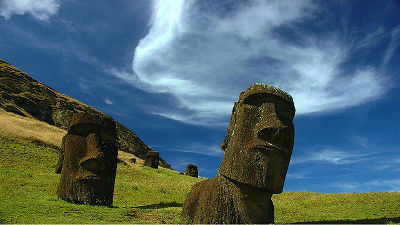What is the 'great war of 4000 people that changed the flow of humankind' that became clear from one human bone?

In 1996, a large archaeological site spanning several kilometers was excavated in the
Slaughter at the bridge: Uncovering a colossal Bronze Age battle | Science | AAAS
https://www.sciencemag.org/news/2016/03/slaughter-bridge-uncovering-colossal-bronze-age-battle
The Tollense River basin is known as Europe's oldest battlefield site, where bronze weapons, wood, flint, arrowheads, and large amounts of remains have been excavated. It is said that the battle in this basin occurred about 3200 years ago, during the Bronze Age , when bronze was used as weapons and tools instead of stone.

Those who died in the battle were left in rivers and ponds, but some of them were stripped of valuables by the enemy, and there was evidence that the bodies were thrown into a nearby swamp. The fierce battles in the Tollense River basin were lost in people's memory as the corpses sank into the peat .
In 1996, an amateur archaeologist discovered a protruding humerus in a valley in the Tollense River basin. It seems that a flint arrowhead was biting into the found bone.
Humerus and arrowhead actually found

Archaeologists further excavated and found a large number of bones, including a depressed skull, and a club about 73 cm long. Radiocarbon dating revealed that all relics dated around 1250 BC.
The image below is an excavated skull. There is a large depression in the forehead, and it is presumed that he was hit with a club. Twenty-seven percent of the skulls found also showed evidence of healing from trauma in another battle, suggesting that some of the skulls found belonged to warriors engaged in the war. ..

After that, a large-scale archaeological survey from 2009 to 2015 revealed that the battle in the Tollense River basin was a large-scale war. Wooden clubs, bronze spears and axes, flint and bronze arrowheads, bronze bangles and rings, and bones of more than 5 horses and more than 130 people were unearthed.

'If our hypothesis is correct, these relics had the largest battle ever north of the Alps,' said Thomas Tarberger, an archaeologist and co-director of the excavation site at the local Cultural Heritage Department. This battle is on a scale that is incomparable to the wars that have been discovered so far. '
The time of the Bronze Age varies greatly from region to region. It is said that from Greece, which had a relatively sophisticated civilization, to the Middle East, around 3000 BC, and around India, where the Indus Valley Civilization flourished, around 2500 BC, stone tools had already changed to bronze tools. However, the Bronze Age culture was introduced to Europe a little later, and it is said that it started around 2000 BC, although it depends on the small civilization in each region.
Prior to 1990, it was not believed that there was a major war during the Bronze Age, so when the ruins of the Tollense River basin were excavated, the theory that 'it might have been a large tomb' was also proposed. .. However, in addition to the discovery of arrowheads and decapitated corpses that dig into the bones, almost all of the 130 human bones found by forensic analysis were found to be 'males aged 20 to 30'. It turns out that a large-scale war certainly took place in the Tollense River basin.
In addition, as a result of analyzing the holes in the bones found, the result that the shape matched the arrowhead found at the site was also obtained, which proved that a large-scale war had occurred in the Trenze basin. ..
Further detailed analysis of the bodies and examination of tooth isotopes revealed that the warriors who fought in the Tollense River basin were likely to have come from some hundred kilometers away. Nitrogen isotopes in a man's teeth indicate that he was eating a millet-rich diet that was grown slightly south of Scandinavia.
According to Detreff Janzen, the archaeologist of the excavation project, only 10% of the site was explored as of 2016, and if the entire area was excavated, more than 750 human bones would be found. Pointed out that there is a possibility. Assuming that one in five people who participated in the war died, Janzen argues that the war would be as large as more than 4,000 warriors.
Archaeologist Christian Christiansen of Gothenburg University speculates that 'the time of the Great War in the Tollense River basin was a turbulent time when the center of civilization was shifting from around the Mediterranean to the Baltic Sea.' I will. The Mycenaean civilization of the Bronze Age, which flourished in Greece, known for the Trojan War , is believed to have collapsed around 1200 BC, and the number of fortified settlements in northern Europe may have increased immediately after the war in the Tollense River basin. , It is one of the grounds for speculation.
Archaeologist Elle Wandkirde of Aarhus University said, 'Around 1200 BC, social and cultural progress changed radically. The Battle of the Trense River basin was a turning point in social organization and war in Europe. There is a possibility. '
Related Posts:
in Science, Posted by log1i_yk







